So What Is Local SEO?
It’s the practice of optimizing a website in order to increase it’s traffic, leads and brand awareness from local searches. Some common tasks associated with local SEO include making sure a business is found for it’s local keywords, optimizing a business’s Google My Business profile, and building “NAP” citations.
In other words, if you’re a local business and haven’t developed a local SEO strategy, you’re missing out on an opportunity every time someone searches for your products or services.
Did you know 46% of all searches on Google have local intent and 97% of those searches are for local businesses.
So How Does Local SEO Work?
In summary, local SEO works the same as organic SEO, but the main difference is the added geographical component that comes with ranking up in Google’s search engine results pages (SERPs).
According to MOZ’s report on ranking factors, they explained how the proximity to the searcher is the top local map pack ranking factor.
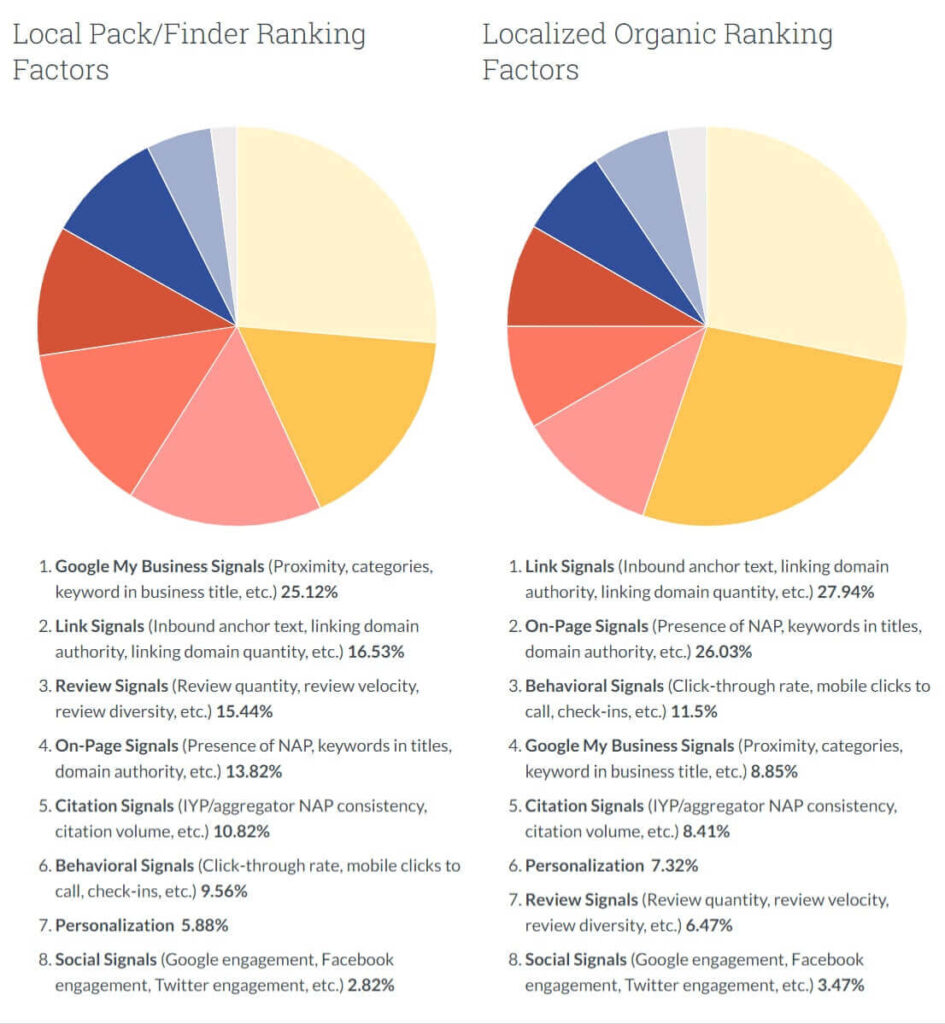
What Is The Map Pack?
The map pack or local pack is the top 3 search results in a Google search for local businesses pulled from Google maps.
Your usual method for showing up in those searches is to optimize your local SEO strategy around “store + city” keywords.
For example, when you search for “plumber Philadelphia” Google gives you the map pack of the top 3 search results.
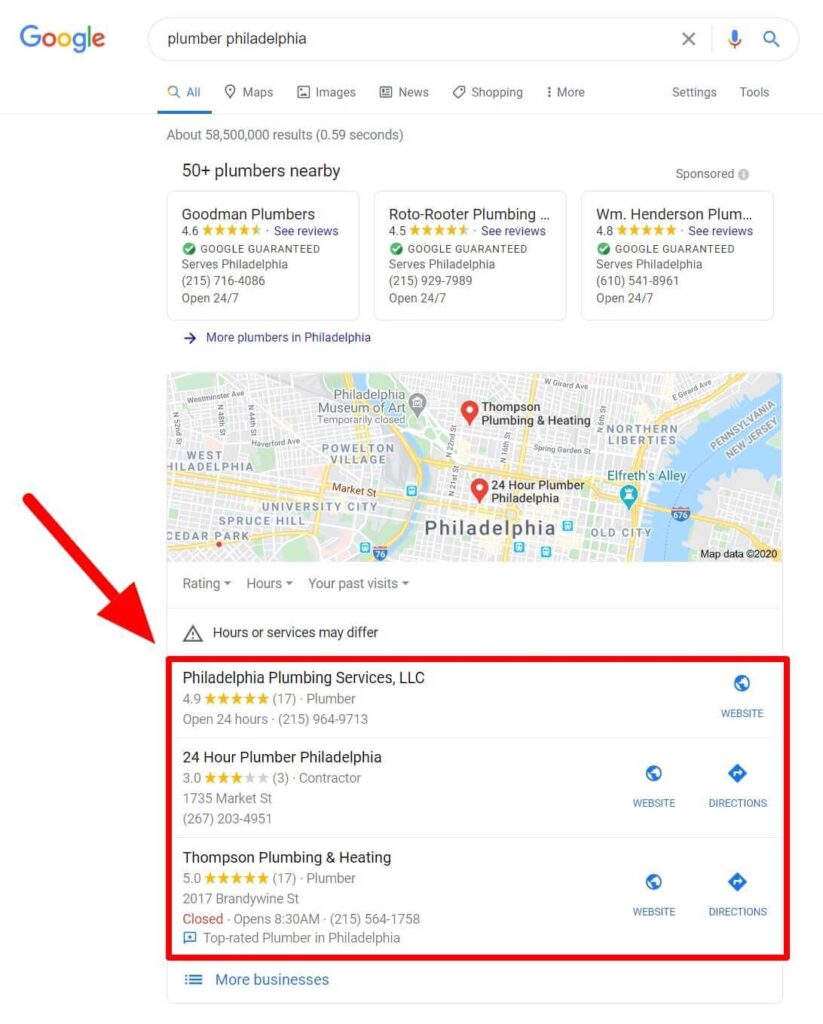
On average, the number one search result gets an average click of 36.4% and the number ten spot gets 2.2% of clicks.
In other words, you want your business to sit comfortably in the top 3 spot but preferably at number one.
Another active trend that’s taking over slowly but surely is “near me” searches which has been growing over 150% faster than the traditional local based searches.
So, how do you get there?
Tip #1: Optimize Your Website
If your website isn’t properly optimized you’re going to have a hard time trying to rank up in Google SERPs.
So take the time to get your website audited with tools like SEMrush that give you a full breakdown of how your website’s local SEO is performing in comparison to your competitors.

One of the main takeaways from this audit is to see what keywords you’re currently showing up for in Google SERPs.
For example, if I were to use the first plumbers website that comes in up for “Plumber Philadelphia” and audit it we’d be able to see a full breakdown of how they’ve structured their own local SEO strategy.

After you’ve audited your website, make sure that you review your contact page to make sure you clearly display your “NAP”.
- Name
- Address
- Phone number
This is important because 72% of consumers who search for local businesses end up visiting that location if they’re within at least 5 miles.
What makes this even better is that 78% of those local mobile searches result in an in-store purchase.
If you have 10 or less locations you should list them in the sitewide footer of your website.
You want your NAP data to be 100% consistent everywhere and that means on your:
- Website.
- Google My Business profile.
- Business Directories.
- Local listings sites.
Basically, any place that mentions your business online.
If you need help verifying or building your citations try using SEMrush to help you do that.
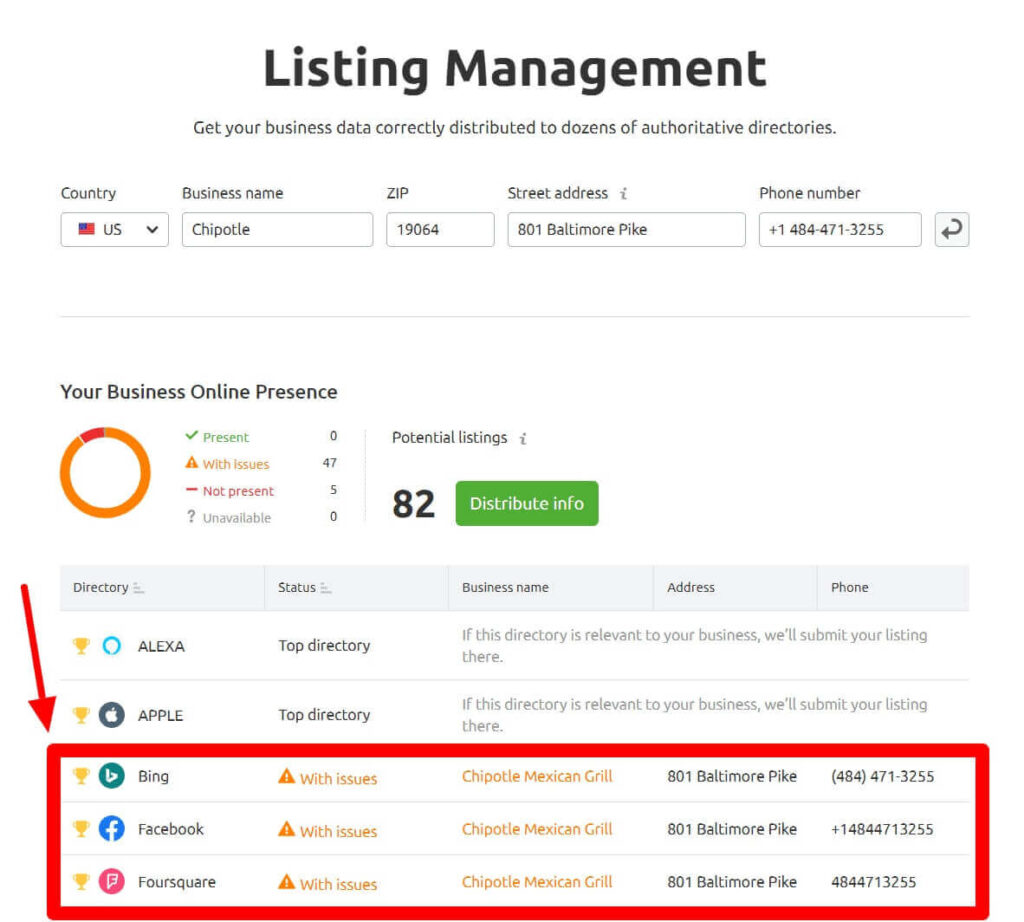
If there’s any citations that need a manual change from a person as opposed to a directory, you’ll need to reach out to them one-by-one with targeted, friendly outreach emails.
Here’s an example:

Make Sure That Your Phone Numbers Are Clickable
This is important because about 30% of mobile searches on Google are location related.
Here at Sangkee Chinatown, they’ve ensured their phone number can be viewed and clicked on mobile devices to increase the quality of user experience so that customers don’t have to go back and forth between their site and phone app to call them.

If you click this phone number you will get prompted to call from the website.
Add A Map Or Your Location To Your Site
The whole point of local seo is to make it easier for people to find you, right?
So why not make it easier for them by adding a map to your site to show them exactly where you are.
For example, Chick-Fil-A made it extremely easy for people to find them by adding a location page to their site.

Add Schema Mark Up
Schema was made in order to help search engines like Google, Yahoo, Bing, etc. tell them what your website is about.
For the non-technical people who want to boost their rankings a bit with this method you can use Hall Analysis to help develop your schema and simply copy your code.
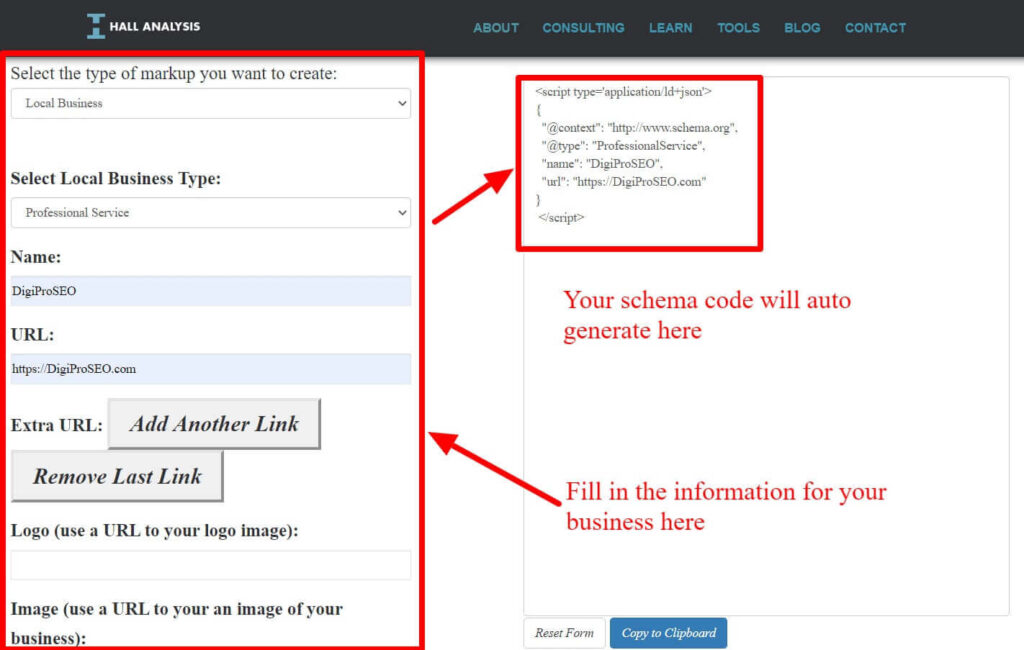
Once you’re done copying your schema, paste the code into the <head> section of your website.
To make sure you’ve done everything correctly use Google’s structured data testing tool.
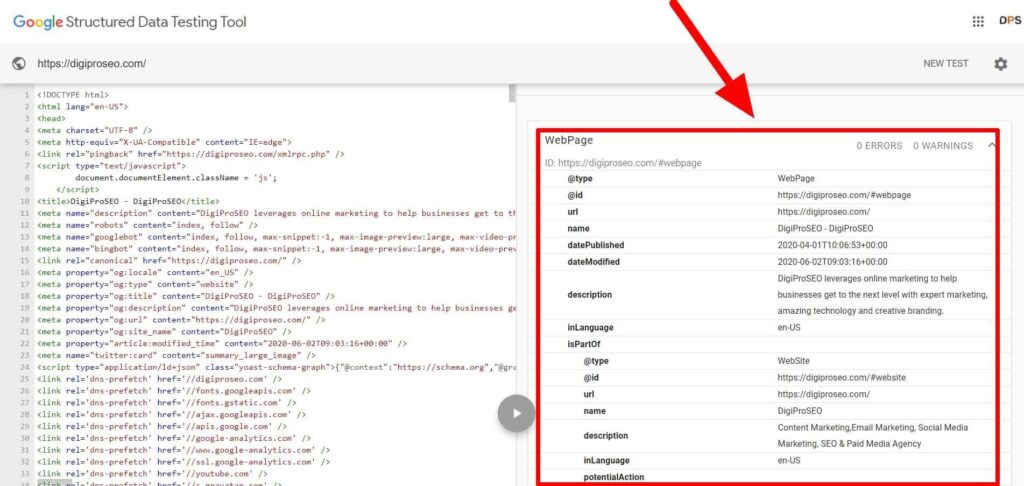
Tip #2: Claim Your Online Profiles
You may not know this but platforms such as Google My Business, Yelp, and Home Advisor sometimes create business profiles on your behalf to be claimed.
It’s important you claim these profiles or create them yourself because not only do you want to make sure the information about your business is universally the same across every platform but you want to make sure that your business appears on every major platform.
Did you know that after Google’s map pack it’s oftentimes followed by review sites from organic searches?
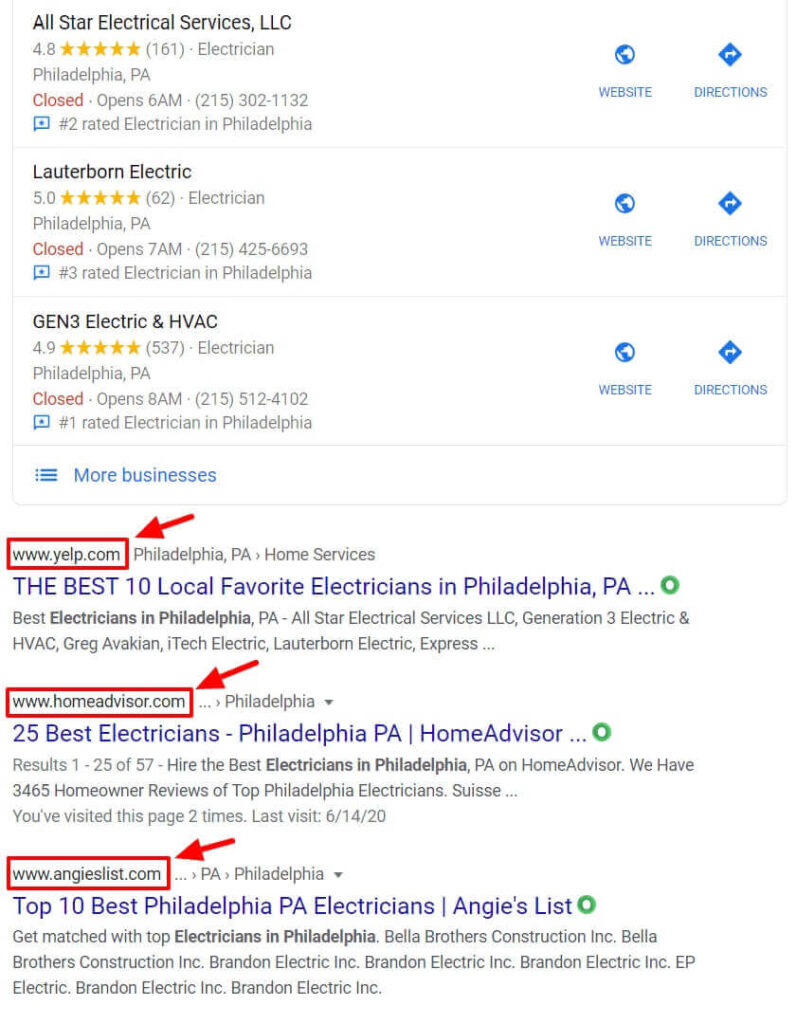
Google My Business
Claiming or filling out your Google My Business profile is not only a good place to start but should be the first place.
When people are searching for your business online they’re usually doing that from the number one online search engine so why not be there for customers to find you?

Google My Business allows you to manage how your profile is seen on Google’s search engine.

Once you’re done your profile should resemble how most business pages in a local Google search should look.

What’s even better is that now you can start replying to all of your reviews on Google.
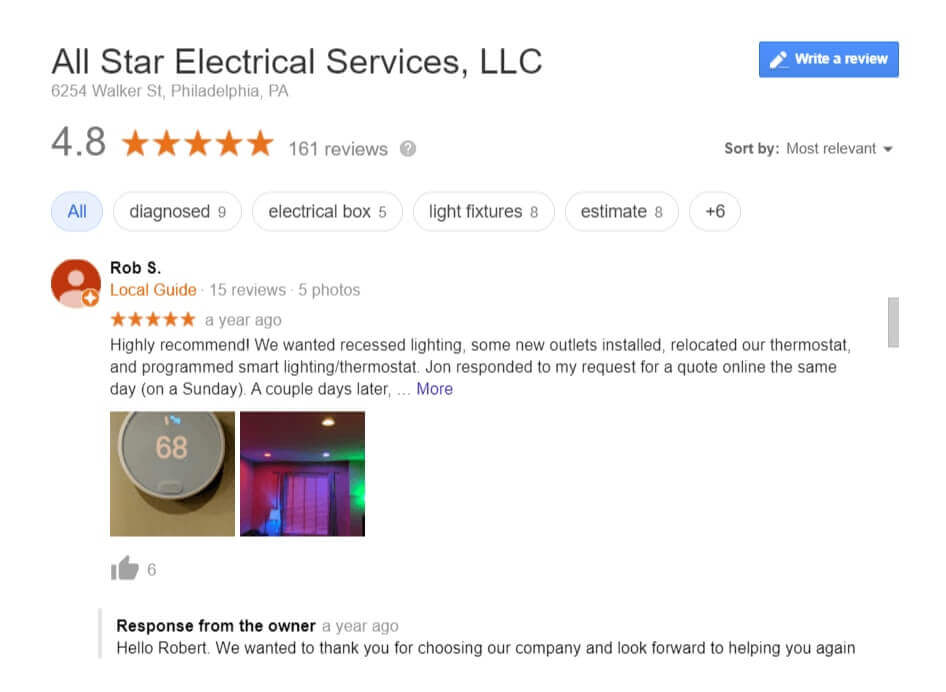
You could even reach out to your previous customers who you know are happy with your services and give them a shareable Google review link to rate your business.

What To Avoid When Asking For Reviews
Before asking for reviews, always look for that platform’s guidelines in requesting them to avoid potential problems like your business profile being flagged.
For example, platforms like Google don’t allow you to give incentives in exchange for reviews and Yelp doesn’t allow you to ask for reviews in any way.
Claim Your Other Business And Social Profiles
Check online for business directories matching your industry by using searches such as:
- [target location] reviews
- [industry/niche] [target location] reviews
After you’re done claiming or creating your profile on business directories be sure to set up your profile on social media platforms.
Keep in mind when setting up your profiles you want to keep in mind that consistency is key.
By setting up your business profiles, you’ll become more visible to customers on more platforms. You’ll also provide search engines with more consistent information about your business, which will help to boost your ranking.
Tip #3: Create Local Content
Blogging is probably the most important thing you could ever do for your business when it comes to local SEO.
Much like traditional SEO, local SEO is created with the same process but instead of having to do research on a bunch of different keyword terms it’s more tailored to the city your business is in.
So when writing your posts, make sure that you include information about the city you’re in such as neighborhoods and any landmarks.
You can use information about your city such as information about upcoming events, news articles, sponsoring local teams or anything else going on in your area.
A great example of this is Dorian Drake International, Inc who worked with the local university of Purchase College to host a non-profit race on their race track to help local organizations like New Rochelle’s Hope Community Services get more funding to continue helping the local community.
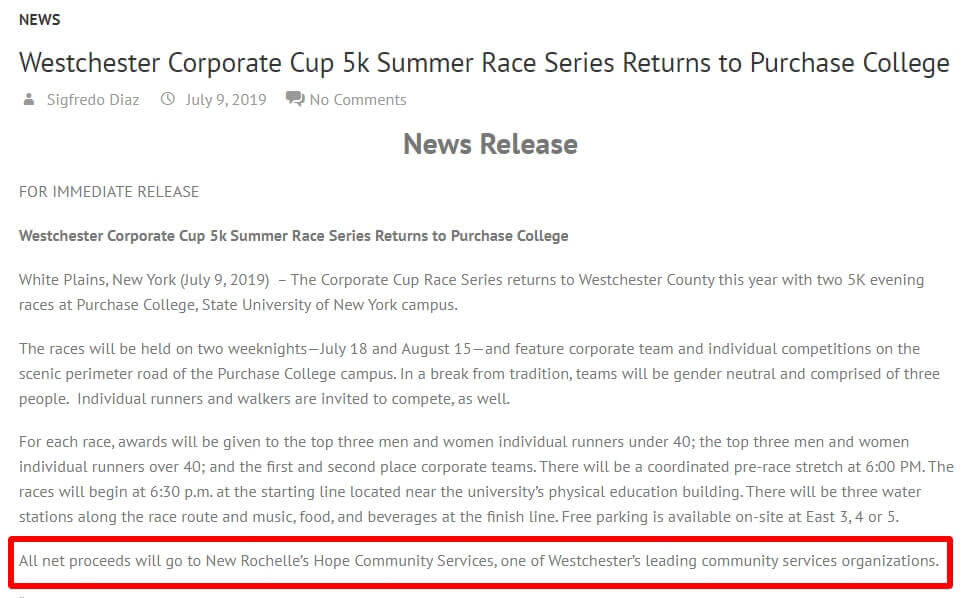
Keep in mind that you should be talking less about your business and more about what’s happening in the community.
Tip #4: Build Links
While you’re creating content for your audience be sure to also focus on generating backlinks to your website and blog posts.
The reason you develop a link building strategy is because pagerank still plays a vital role in Google’s ranking factors.
How do I know this? Google said so.

That’s Gary Illyes, an employee at Google basically saying don’t stop generating those links, it helps!.
So what is page rank?
It’s one of Google’s formulas for measuring the value of a website’s web page by looking at the quantity and quality of other websites linking to it. In other words, it tells Google how relative or important your webpage is on the internet.
A great way to start building your links is to guest post with businesses related to your field.
I suggest steering away from direct competitors and finding related businesses to collaborate with and link to each other’s posts.
A good example of this are personal injury lawyers working with doctors to get diagnoses for their injured clients. This is a great opportunity to build this relationship and find articles on their site you have the opportunity of gaining links from.
Look at all the local businesses near you and see where there is an opportunity to build up your backlink profile and build deeper relationships.
A great idea would be to contact your local chambers of commerce and getting a backlink from them similar to Gerben Law Firm, PLLC.
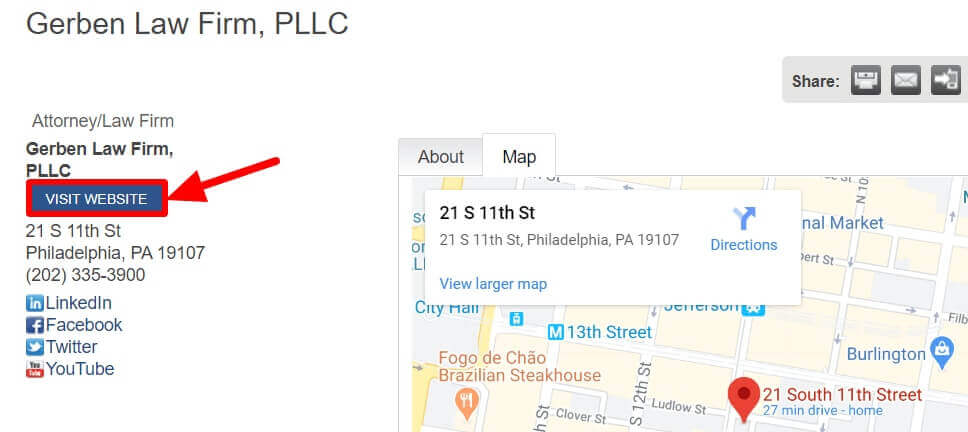
Typically how you get listed depends on the Chamber. Some do require some type of fee but because these links are super relevant, they’re usually worth the hoops you need to jump through to get them.
Plus, you almost always get a NAP with your link.

There’s a lot more that goes into your local seo strategy but this guide will get you on the right track to ranking your business over the competition. Of course here at DigiProSEO we’re more than happy to help by consulting or taking over your digital marketing strategy to make sure best practices are done efficiently.
Contact Us Today! Learn how we can help take your business to the next level.


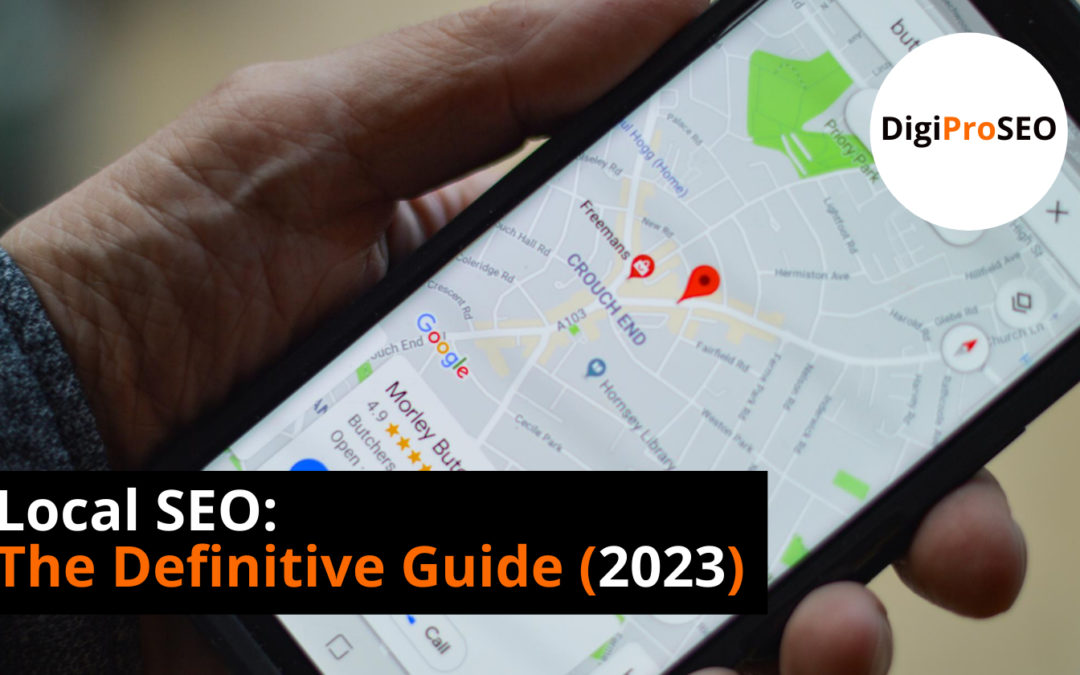
This post provides clear ideas in favor of the new people of blogging, on how to do blogging.
Thanks Sarah, just trying to help steer people in the right direction.
Good writing plus a nice layout. Your web site deserves all the positive comments it has been getting.
Thanks Wendi!
Very nice post, I surely love this site, keep it up.
Thanks Patricia, will do!
Lovely just what I was looking for. Thanks to the author for taking his time on this one.
Thanks Peter, much appreciated!
Pretty nice post. I simply stumbled upon your blog and wanted to mention that I have really enjoyed surfing around your blog posts.
Thank you Steve, happy to help when I can.
I am a regular reader, how are you everybody?
We will have new articles coming out soon. It’s been very busy here! Thank you for the continued support!
Wonderful article!
Glad we could help in anyway.
Great post! We are linking to this great post on our website. Keep up the good writing.
Thank you for the kind words 🙂
Thank you for the kind words.
Some truly interesting details you have written. Helped me a lot, just what I was looking for :D.
Happy to help!
Thank you ever so for you article. Really thank you! Really Cool.
Muchos Gracias for your blog article. Thanks Again. Fantastic.
Not a problem, glad we could help!
Good post. I have been experiencing some of these issues as well so thank you for your post.
Glad we could help!
This is one awesome article. Really thank you! Really Cool.
No problem great to know we’re helping in some way!
Sweet blog! I found it while searching on Yahoo News.
Thanks!
I quite like looking through a post that will make people think. Also, thanks for allowing me to comment.
We love helping in any way we can.
I am so grateful for your blog article. Much thanks again. Cool.
Thank you so much for the kind words!
Some genuinely prime content on this website, saved to bookmarks.
We try hard to provide good content here. Look forward to more coming soon!
Some genuinely nice stuff on this website , I love it.
Thank you!
Your blog is fantastic!
Thank you for the kind words!
Way cool! Some extremely valid points! I appreciate you writing this and also the rest of the site is also really good.|
Always happy to help and thanks for reading!
Very nice post. I just stumbled upon your blog and wanted to say that I have really enjoyed surfing around your blog posts. In any case I will be subscribing to your rss feed and I hope you write again soon!
Keep an out for the next article!
Thanks again for the blog article. Really looking forward to reading more. Really Cool.
Always a pleasure to help, thanks for reading!
Excellent stuff. I can not describe how much your blog has helped me in my academic research on the subject. I am now going to get top marks for sure. Thanks a million. I owe you one.
Thank you for your kind words and we’re very happy to help out wherever we can 😁
Hi! I want to say that this article is awesome, nicely written and includes approximately all important infos.
I would like to see more posts like this .
Thank you for the kind words and feel free to subscribe to our newsletter to never miss a post.
Many thanks for posting this particular content, We were searching for it on multilple web sites and also merely identified a fair degree of details here.
We’re happy to help and took a lot of time researching all of the information for our viewers. Happy to see people are appreciating all of it.
A round of applause for your article. Great!
Thanks for the motivational comment! Join on us on social media!
This is very interesting, You’re a very skilled blogger. I joined your feed and look forward to seeing more of your excellent posts. Also, I shared your web site in my social networks!
That’s great to hear! We’re backed up on a lot of work at the moment but we’ll be posting more soon!
I think the above article is informative for everyone. For me the Information is really really useful.
Happy to help where we can.
I noticed your internet page from facebook and its pretty cool. Thank for giving out this kind of an incredible blog post
Feel free to follow us for more content.
I need to to thank you for this very good read!! I absolutely loved every little bit of it. I have got you book marked to look at new things you post.
Happy to help anyway we can.
Really enjoyed this blog post. Fantastic.
Thank you for the compliment.
I’m still learning from you, and I’m trying to make my way to the top as well. I definitely love reading everything that is posted on your site. Keep the posts coming. I liked it!
How to be an influencer for you and help anyway we can.
Good blog post mate no doubt. I liked looking at the wicked blog post! Thanks a lot for posting this.
Not a problem and happy to deliver this post.
Thank you for another great article just wanted to throw you a big thanks.
We do this for our fans who’d like to learn more.
Excellent post, very informative. I wonder why the other experts of this sector do not notice this. Please continue your writing. I’m confident, you have a great readers base already!
Thanks for your support!
Great work! This is the type of information that is meant to be shared around the internet. Thank you =)
Thanks for the kind words!
Thanks for sharing, this is a fantastic blog article.Really looking forward to reading more. Really Cool.
Thanks for the positive feedback!
This post was great!
Thank you for this blog post, it was an interesting read. You have made various nice points in the post.
Very good article. I am dealing with many of these issues as well.
Can you please write more on this? Your posts are always helpful to me. Thank you!
Will definitely write more in the future… stay tuned!